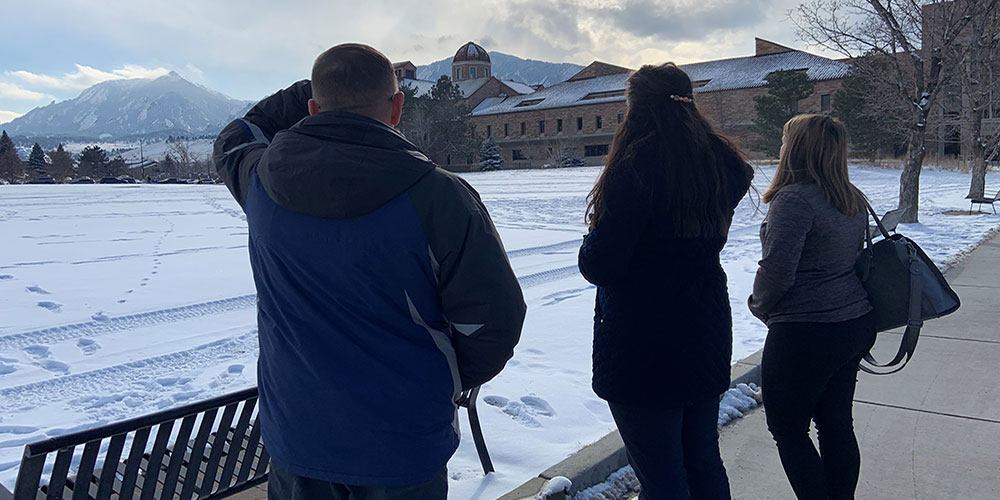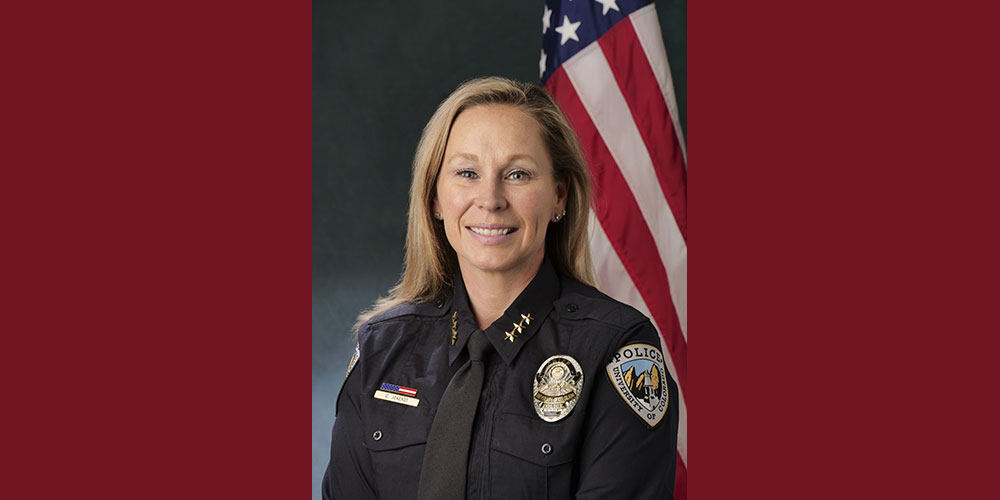Note: The views expressed by guest bloggers and contributors are those of the authors and do not necessarily represent the views of, and should not be attributed to, Campus Safety.
Come fall semester 2023, students, faculty and staff at the University of Colorado Boulder will likely notice security upgrades such as new thumb-turn locks on classroom doors, electrified auditorium doors, so-called “panic buttons” so professors can alert police of an emergency with a simple push, and increased signage – both inside and outside of classrooms – to help occupants and first responders identify buildings and room numbers.
It’s all part of a multi-year security upgrade project paid for by $3.4 million in state-controlled maintenance funding to improve security in the event of a future active harmer or other mass-casualty incidents in areas used for learning. It’s also a tremendous opportunity for public safety officials to develop and share recommendations since there truly is no widely accepted playbook for campus security.
Not all campuses are this large or populous (CU Boulder is a “city within a city” with roughly 37,000 students, faculty and staff living and/or working on a 313-acre main campus, with additional campuses used for research and recreation), and not everyone can secure this type of funding, but all public safety and emergency management leaders can audit, assess and formulate a plan for strategic upgrades to critical security components and communication initiatives to educate its stakeholders.
CU Boulder began this project with a vision for improved security and a commitment to share what we’ve learned with others. While the project is ongoing, we’ve gleaned some valuable information along the way. Here are some recommendations for campuses large, small, and in-between.
1. It Starts with Homework
Before CU Boulder facilities and emergency management officials made a single security recommendation to campus leaders, we launched Phase One of the multi-part project, which came with a hefty research component. It included a campus security assessment and comprehensive review of active harmer events at higher education institutions covering a span of more than 20 years, from 2000 to 2021. That work led to the creation of an action plan to increase CU Boulder’s campus security that could serve as a national model for other universities, regardless of size or student population.
2. Rely on Experts
As part of this collaborative project involving several divisions on campus, the CU Boulder Police Department (CUPD) was granted funding for technical assistance from the Collaborative Reform Initiative Technical Assistance Center (CRI-TAC), a program from the U.S. Department of Justice. Consultation included guidance in security measures and protocols based on extensive research and the study of best practices and their outcomes.
CUPD worked with CRI-TAC consultant Robert Mueck, who is also a contributor to Campus Safety. Mueck, along with emergency management personnel, conducted a walking tour to get a better sense of CU Boulder’s infrastructure and safety needs. He then reviewed the campus security assessment, reviewed active harmer data, and consulted on the creation of our action plan.
CU Boulder is also working with an architect and contractor on the feasibility, cost and implementation of recommendations.
“This is much more than looking at tactical response — this is risk mitigation through environmental design,” Mueck said. “Students, faculty and staff may not even notice the physical differences that are made, but it’s a back-end way to possibly save lives.”
The retired police chief and threat assessment expert also met with other local first responders in our community to review campus building and classroom safety practices and procedures.

Collaborative Reform Initiative Technical Assistance Center (CRI-TAC) Consultant Robert Mueck conducts a walking tour to gain a better understanding of the campus’ safety and security needs.
3. Cast a Wide Net
Most campuses do not exist in a vacuum. They are surrounded by or near municipalities, and it’s important to involve public safety leaders and first responders from neighboring agencies. CU Boulder’s Assistant Vice Chancellor for Facilities Operations and Services, Brian Lindoerfer, noted how effective a collaborative approach can be.
“It’s not just CU Boulder facilities management, it’s not just CUPD and it’s not just our own campus leaders who need to be ‘in the know.’ We were careful to involve first responders from local police and fire departments in consultation, execution of plans, and even tabletop exercises.”
4. Integrate Recommendations Into Existing Resources but Consider Modifications
The improvements we implement will support the university’s “Run, Hide, Fight” active harmer response protocol, ensuring all campus community members and visitors can take those action steps no matter their physical abilities or which classroom they’re in. CUPD considered the existing protocol and realized that while locks can help people hide, not everyone on campus can run or fight. The assessment, research and recommendations helped us look at safety from a more holistic perspective.
Your campus, like ours, likely already has existing security personnel and response protocols. Carefully consider how changes or upgrades will impact response plans already in place, and be prepared to engage in training and extra communication with all campus stakeholders.
5. Engage Your Skeptics
One important aspect of communicating these and other security measures with our audience was to “prime the pump” so the most skeptical campus community members receive, if not embrace, the message. In our case, that’s students.
Thankfully, we already have a strong relationship with student government and organization leaders and know they play a role in influencing the acceptance of safety messaging. To build even more trust with the general student audience, we collaborated on a series of safety videos to share on Instagram.
We also made a commitment to deliver in-person safety orientations to new students and their families, and include ongoing safety information in both our campus newsletter and newsletters that reach the families of our students. These efforts are ongoing and are yielding positive results.
6. Involve All Segments of Your Community
As incidents of violence on campuses around the country become more common, those who work on campuses of all types are expressing a need for more frequent safety messaging. If your campus is anything like ours, the audience may even demand it. We regularly update our students, faculty and staff about this multi-phase security project, especially during times of unease due to local and national events, connecting updates to reminders about our campus’ options for reporting behavior of concern. We also engage in regular reminders about available safety apps, updates to our emergency alerting website, and active harmer response training.
7. Meet People Where They Are
It may be important to consider translating safety information into languages other than English, which is a companion project we embarked on recently. Our mass notification emergency messaging is now available in Spanish, Chinese (simplified and traditional), and Hindi, with more language options coming soon. We plan to market this translation effort in a multitude of ways, including newsletter items, posters, and direct email campaigns.
8. Reach Your Goal … Then Keep Going
Although CU Boulder has a goal of completing security upgrades in time to welcome students back for next fall semester, any practitioner knows that work around safety and security is never really done. We will continue to research new technologies available and assess the needs of our campus stakeholders, investing in security upgrades in a way that provides visible proof of progress, yet also wins the hearts and minds of those we serve through ongoing communication and engagement. We are happy to discuss this project. Please don’t hesitate to reach out.
Doreen Jokerst has been chief of police at CU Boulder since Sept. 2018. Prior to that, she was a member of the Parker, CO Police Department for nearly 20 years, rising up through the ranks from police cadet to commander. Chief Jokerst is happy to answer questions and can be reached at [email protected].







